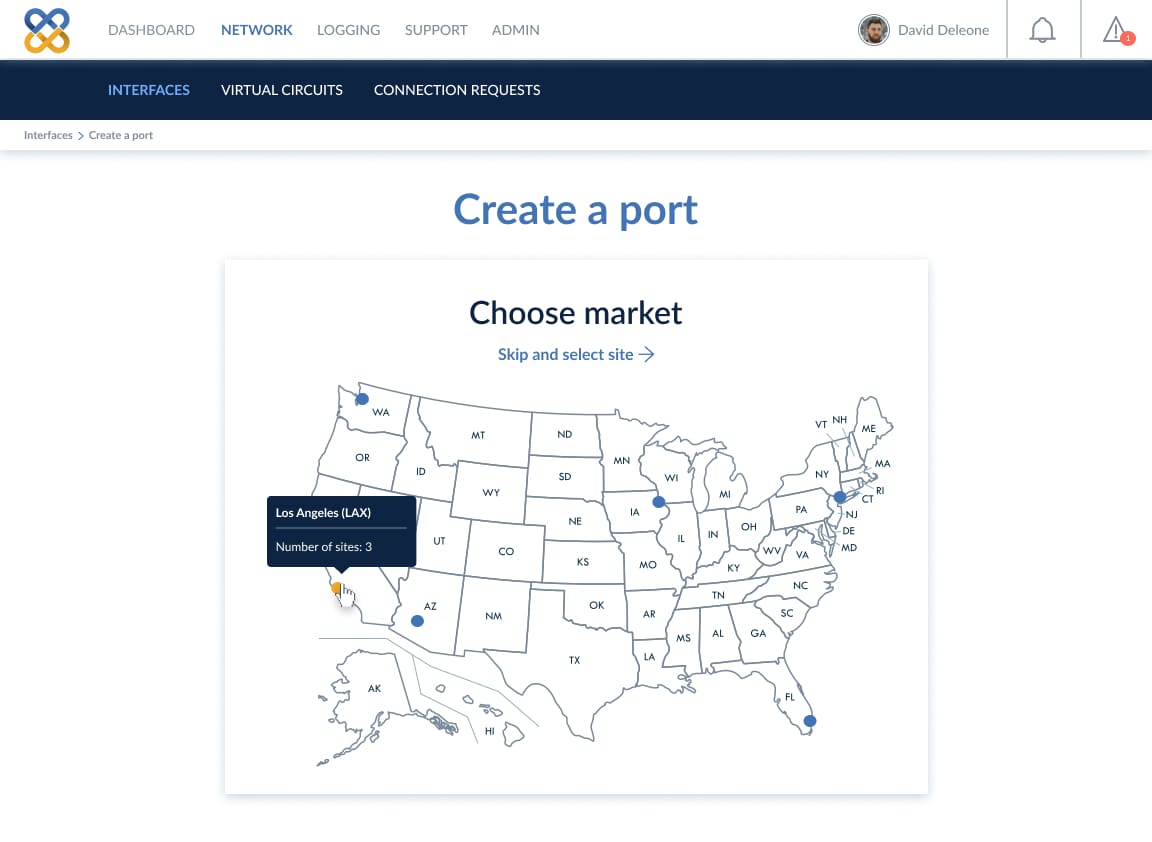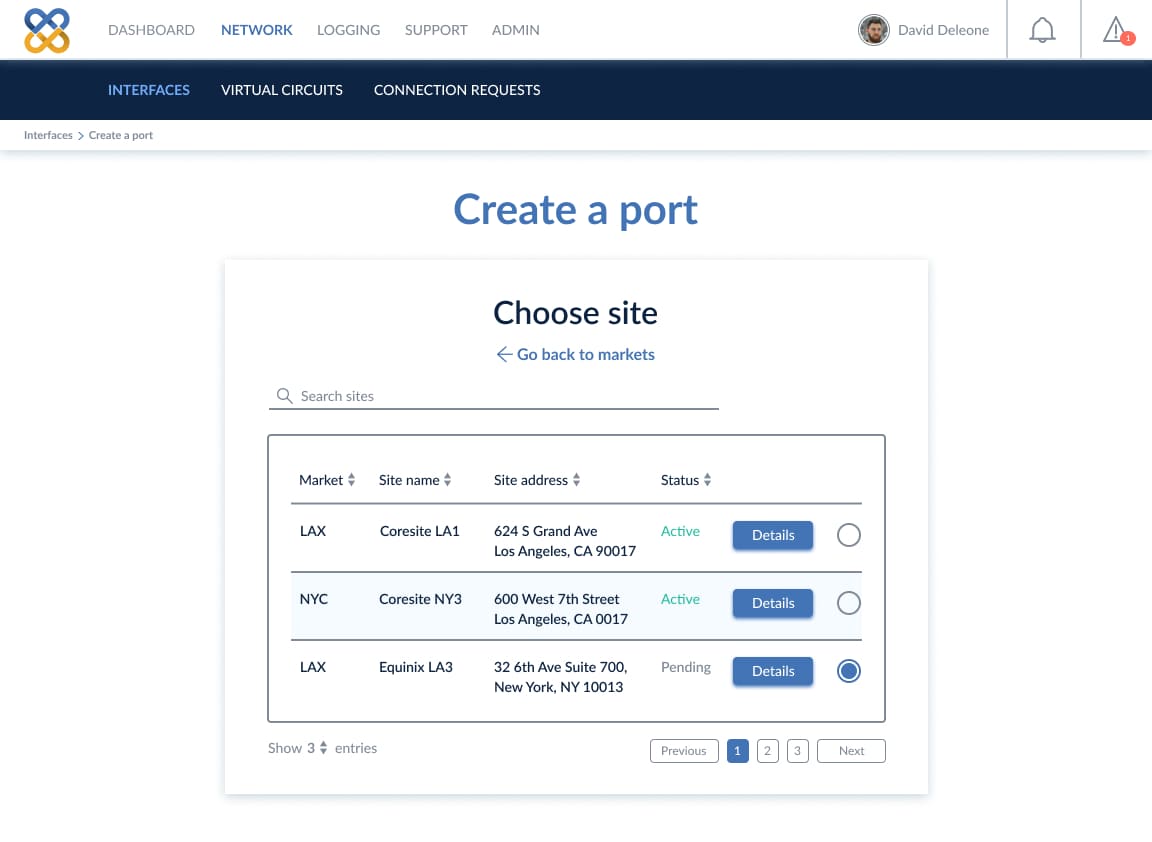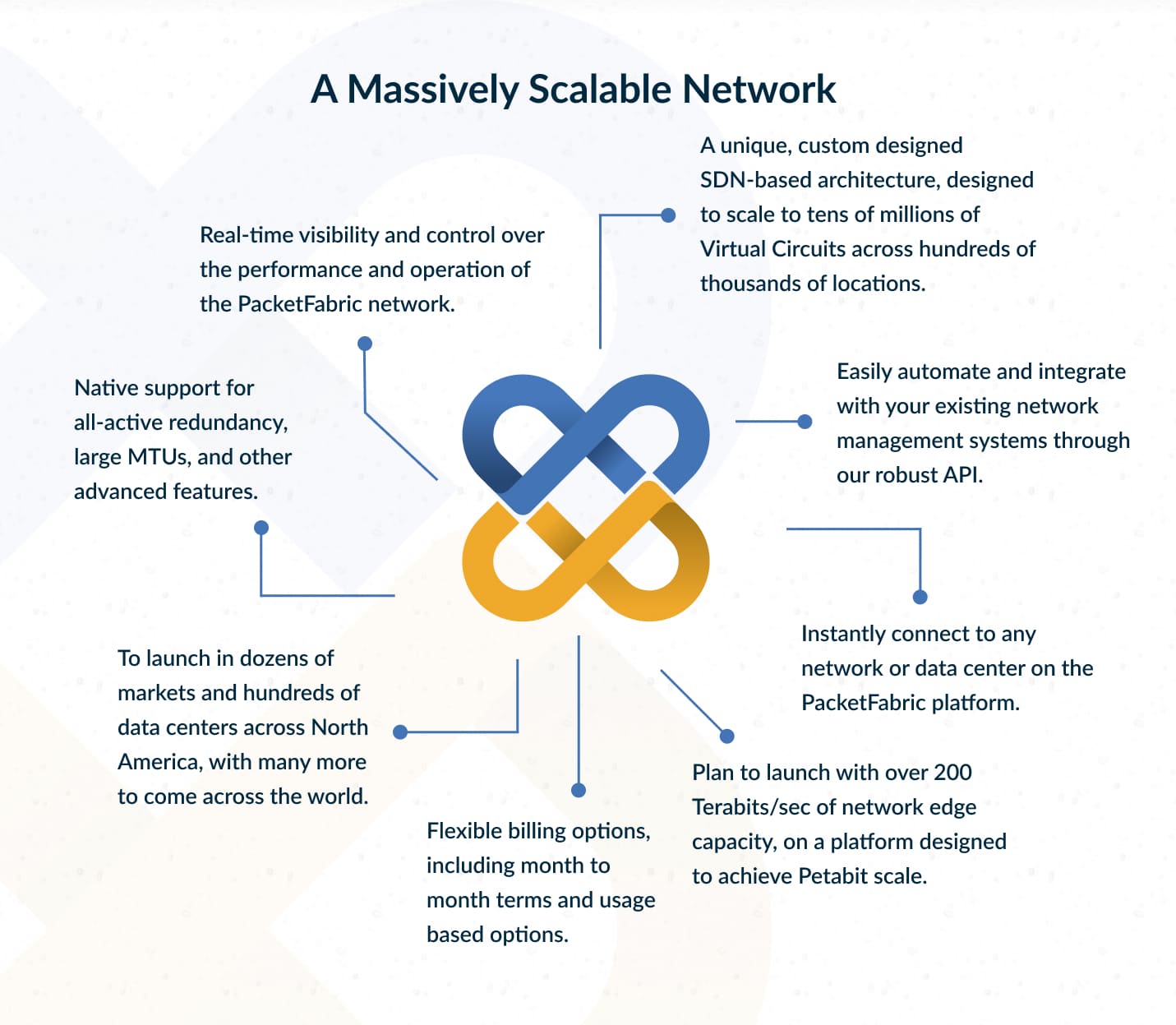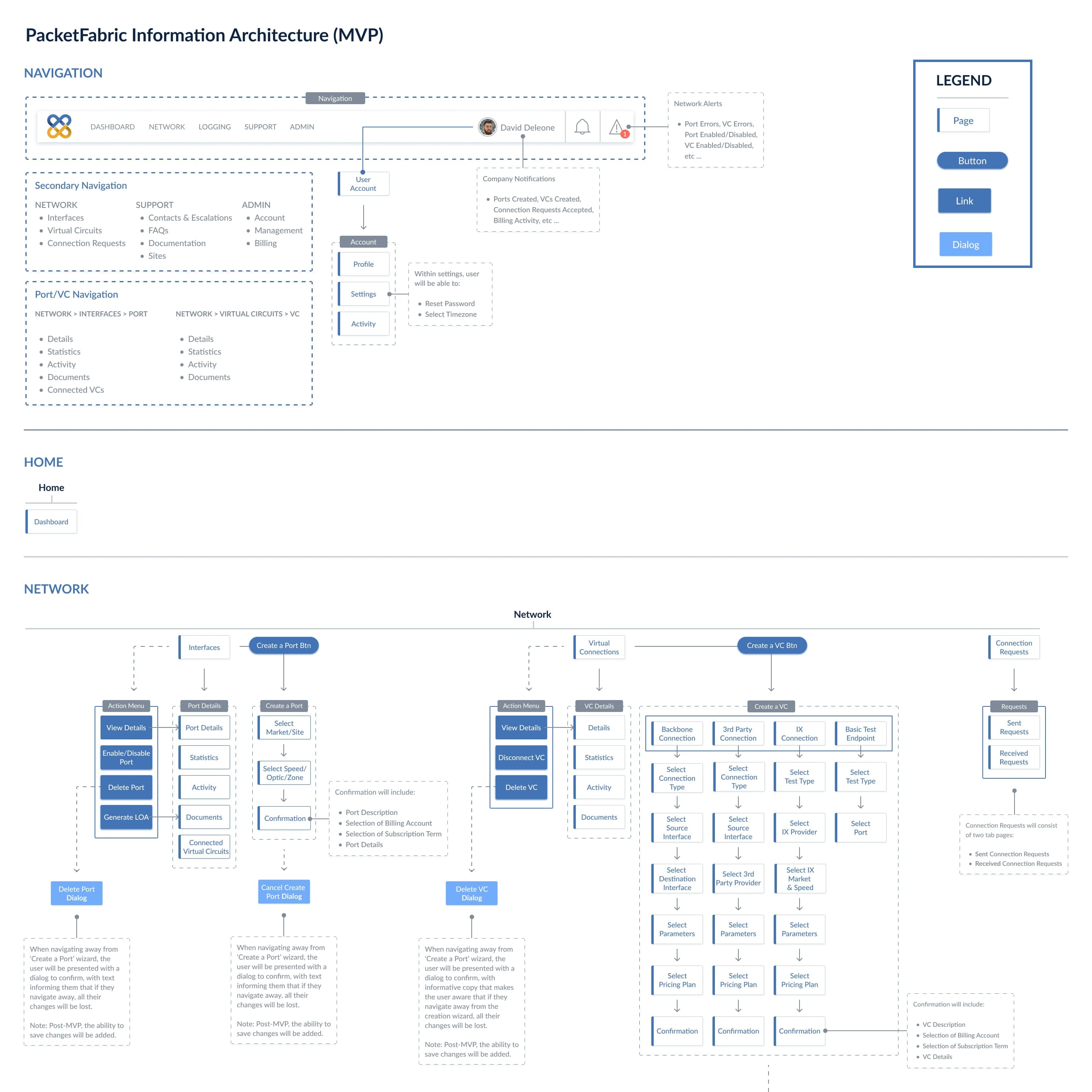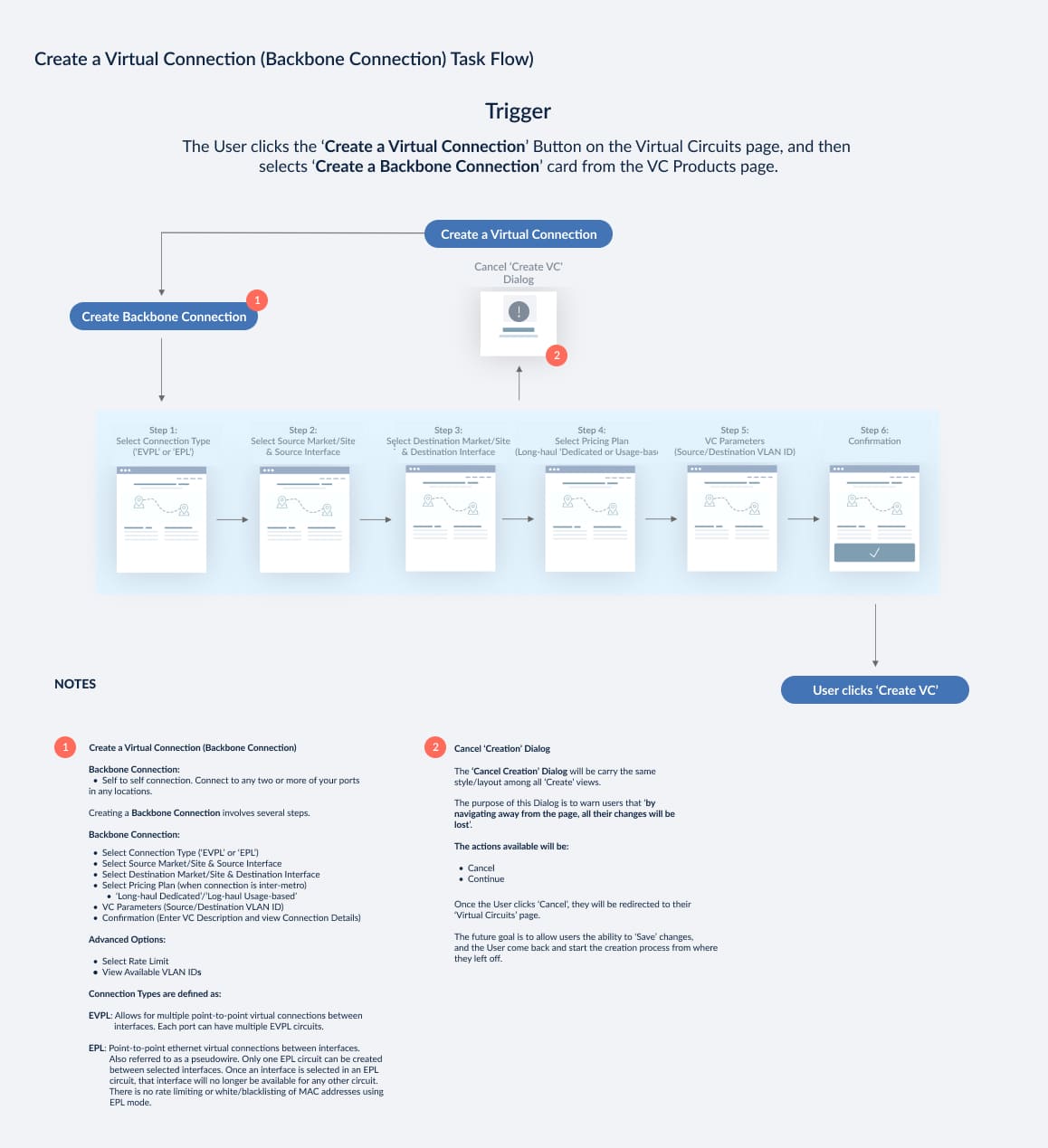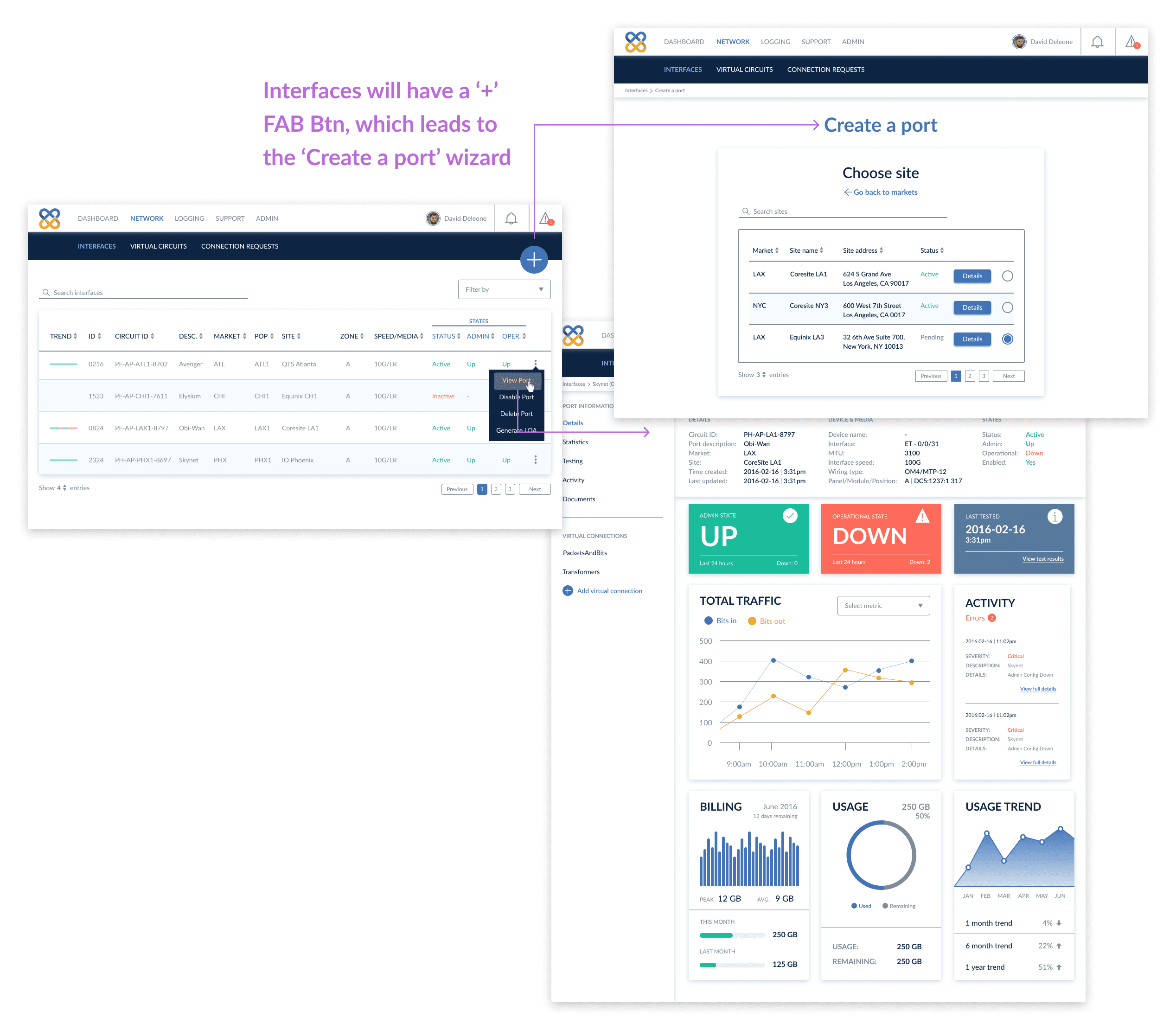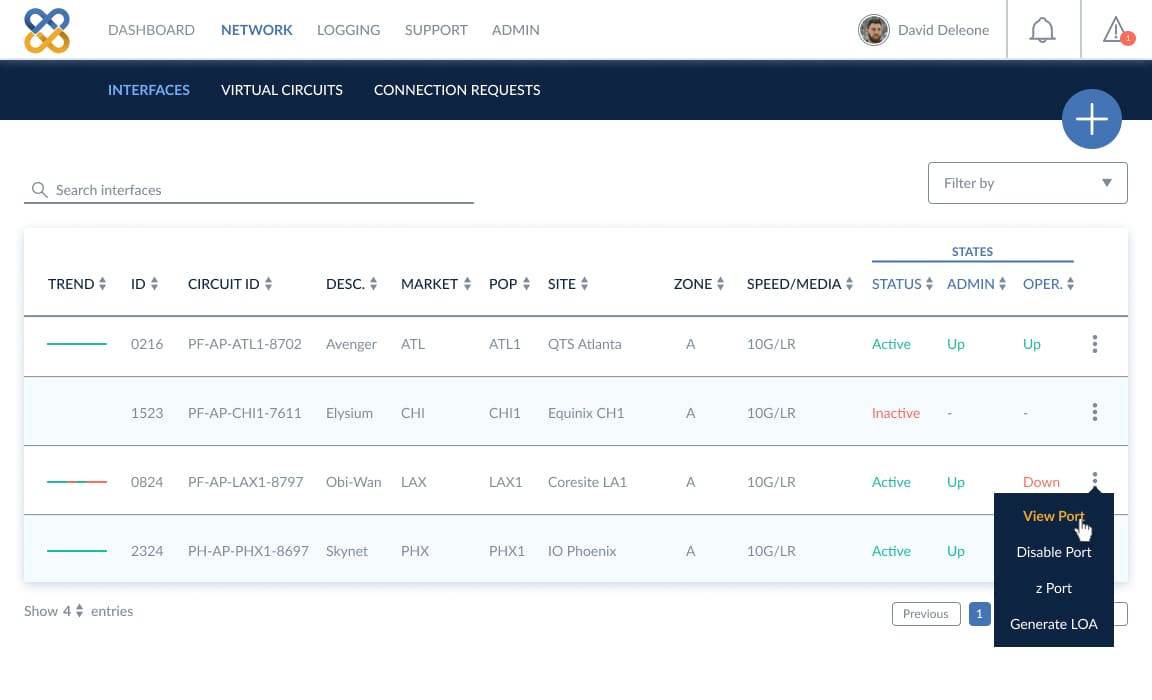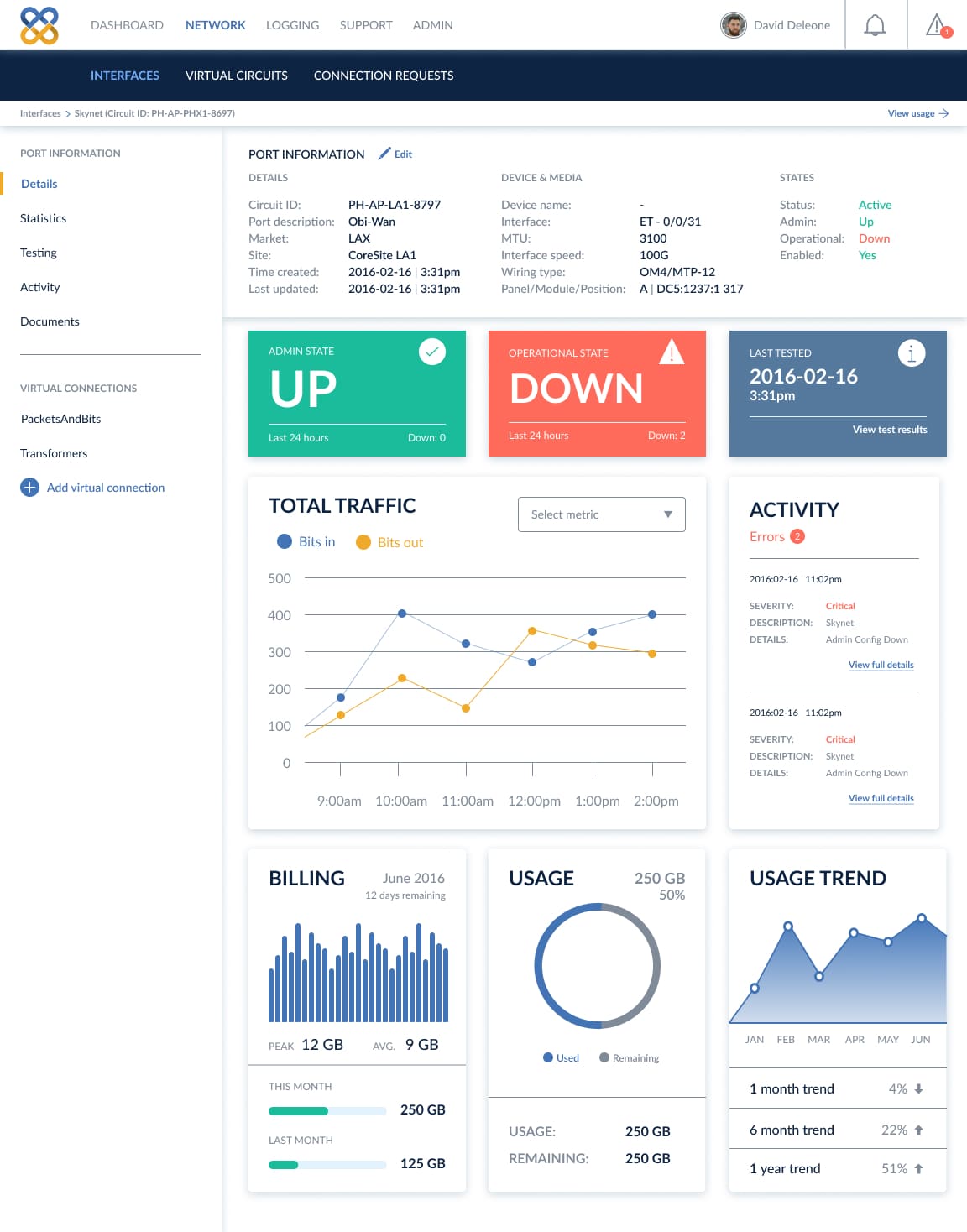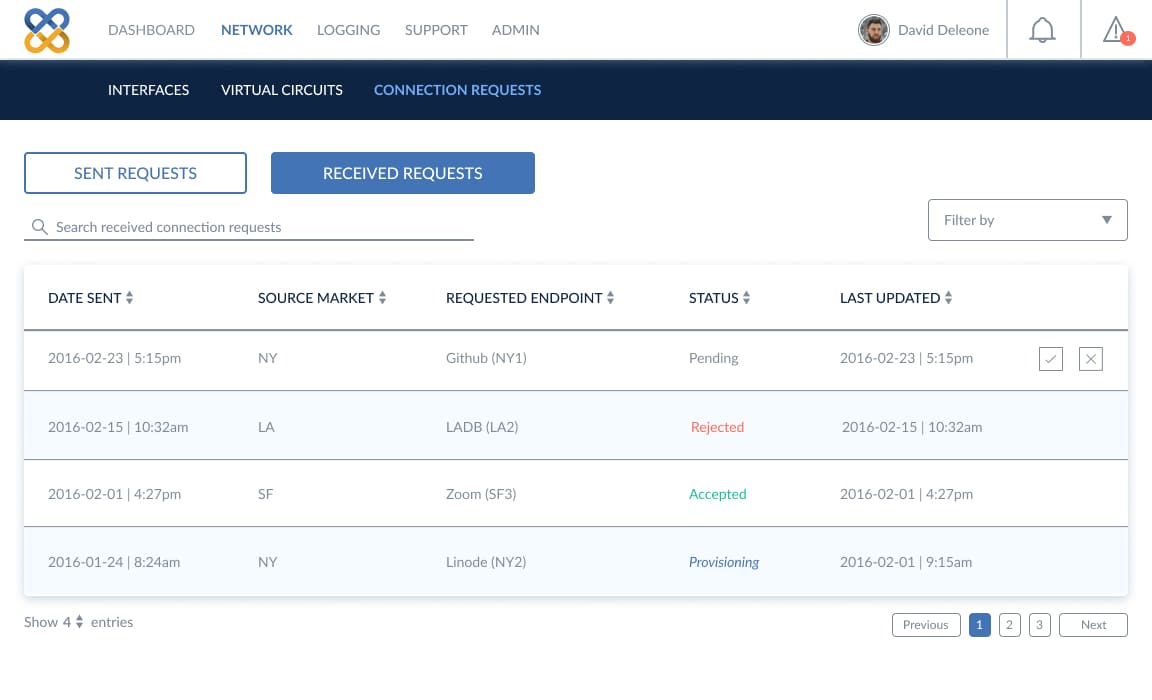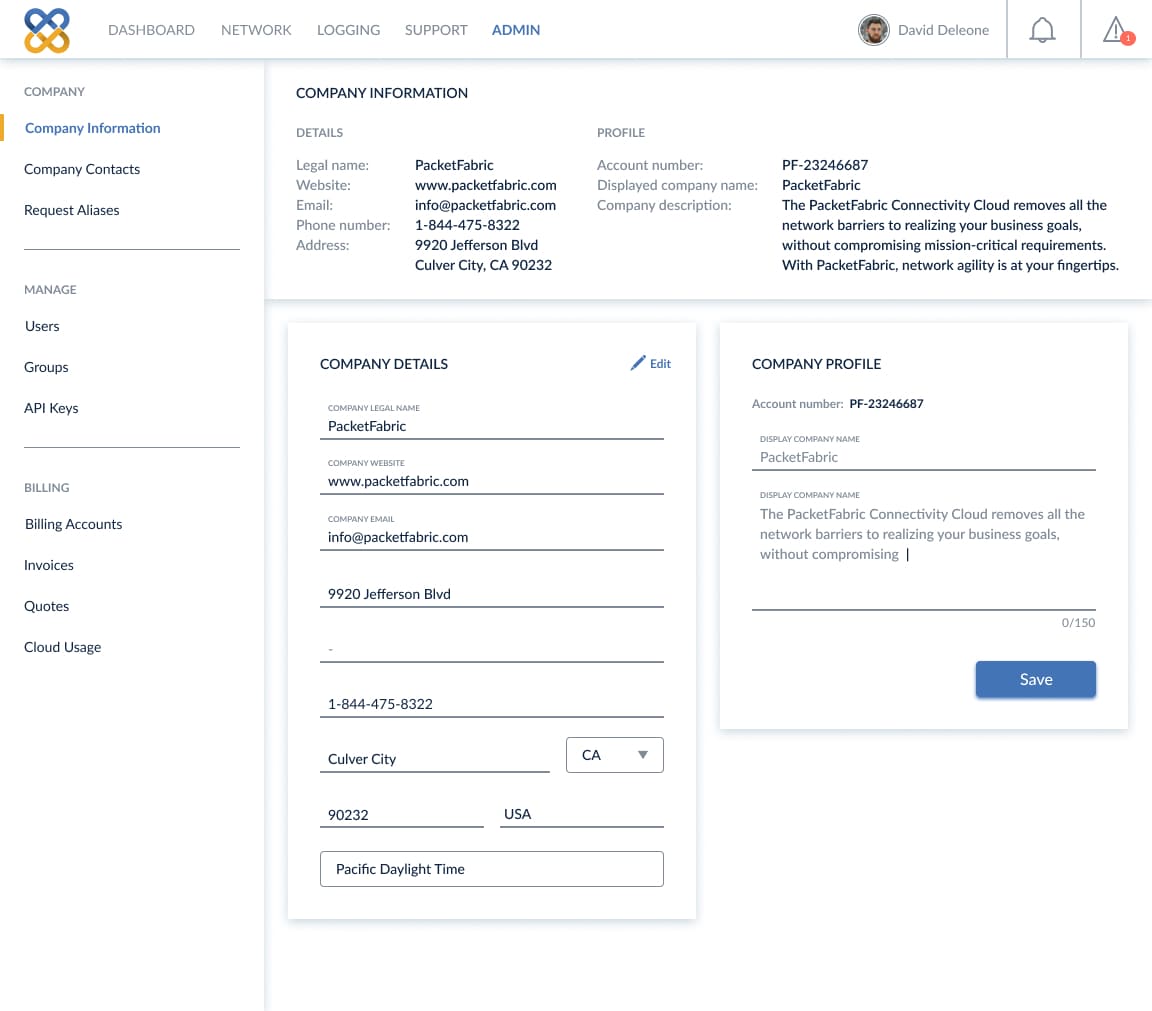As PacketFabric’s Founding Designer, I built the product and design function from the ground up—partnering with founders to define the platform’s foundation, create a scalable design system, and unify brand and product across a complex network infrastructure.
TL;DR
Background
PacketFabric was an early-stage startup, and I joined as the founding designer, wearing multiple hats to support the company’s growth. I was responsible for designing and coding the website, developing marketing assets, and creating the company's MVP product. Key achievements include:
- Wearing multiple hats. Working in a fast-paced, early-stage startup was both challenging and rewarding. It allowed me to hone my skills while playing a pivotal role in establishing the brand’s identity, developing the design system, and designing the customer-facing portal.
- Turning ideas into products. Transforming abstract ideas into tangible products was an exhilarating experience. I closely collaborated with the founders to shape the product vision and strategy.
- Pitch support. I also helped the founders prepare pitch decks for investors and potential clients. This involved designing slides, curating assets, and incorporating feedback from the founders into the final presentations.
Discovery
The founders identified a significant gap in the telecommunications industry: no simple, cost-effective solution for network deployment and maintenance. Traditional methods were time-consuming, with long provisioning timelines and rigid contracts. PacketFabric’s goal was to create a platform that would enable customers to provision network connectivity instantly across a private backbone network, automating the process for greater scalability.
Team & role
Role
Lead (Founding) Designer,
Front-End Engineer
Team
Anna (SVP), Richard (CTO), Myself (Design), & 6 Engineers
Tools & Methods
Sketch, Invision, Axure, Research, UI design, Prototyping, Usability testing, Front-end development (CSS ownership), QA testing
Duration
3 yrs
Brainstorming
The primary users of the platform were network engineers, so I coordinated user interviews and discussions to gain insights on information architecture and assist with UI exploration.
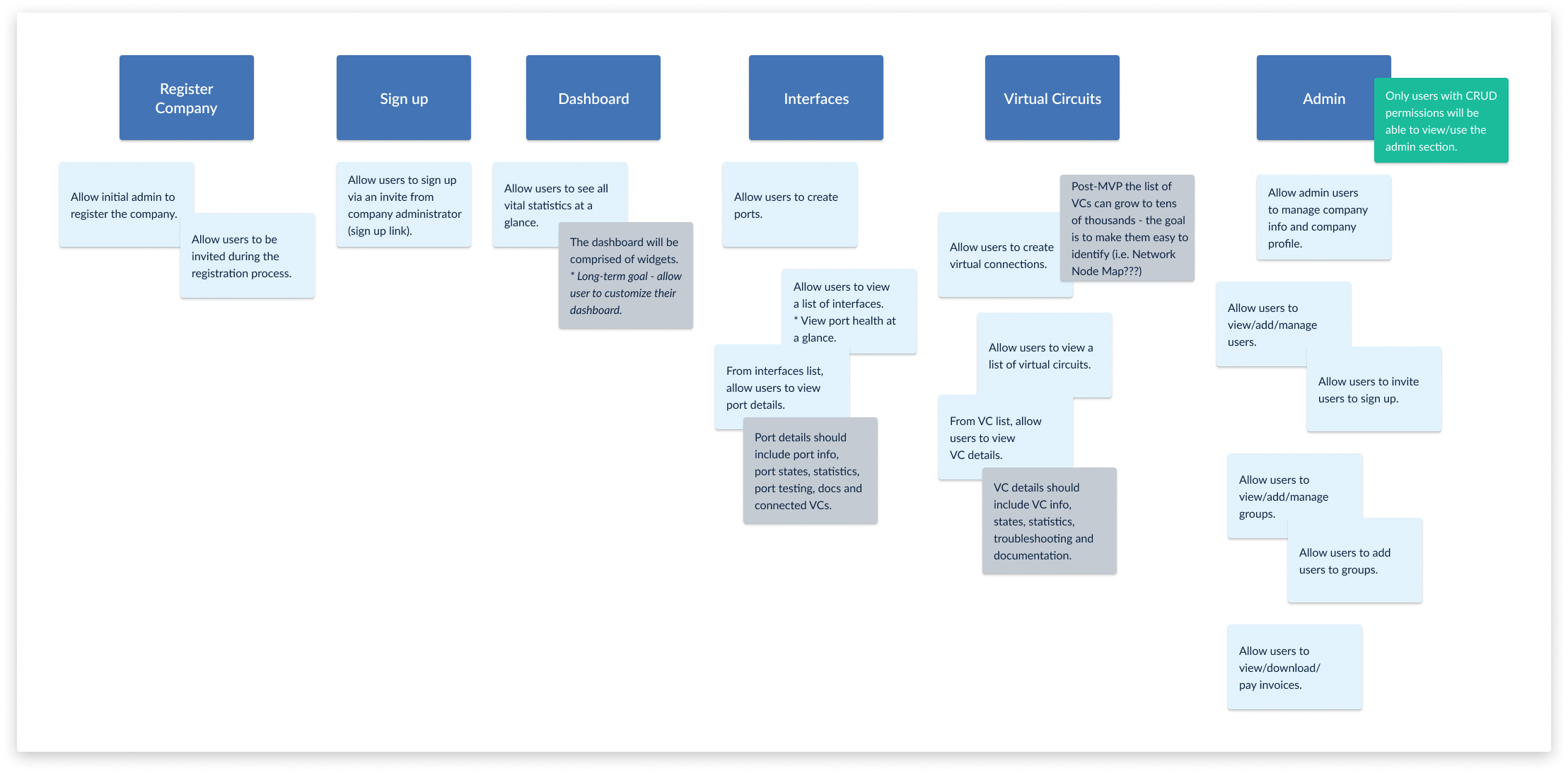
Defining the MVP
Collaborating closely with the founders, I led sketching sessions and discussions to define the MVP. Key features identified for the MVP included:
- Registering a company and inviting users. Company admins would register the company and invite users to sign up.
- Data visualization. A dashboard displaying vital statistics at a glance.
- A visible and manageable network. Users could create ports and virtual connections, with detailed pages to view port and virtual connection information.
- Activity logging. Tracking user and network activities, such as port states, new users, and billing.
- Admin privileges. Enabling admins to manage the company profile, users, groups, and billing.
Creating a design system
The design system was built from small components based on Material Design principles, offering a library of full components, elements, guidelines, and reusable code. This system helped engineers quickly prototype and develop features while ensuring brand consistency. It also provided the marketing and sales teams with downloadable assets.
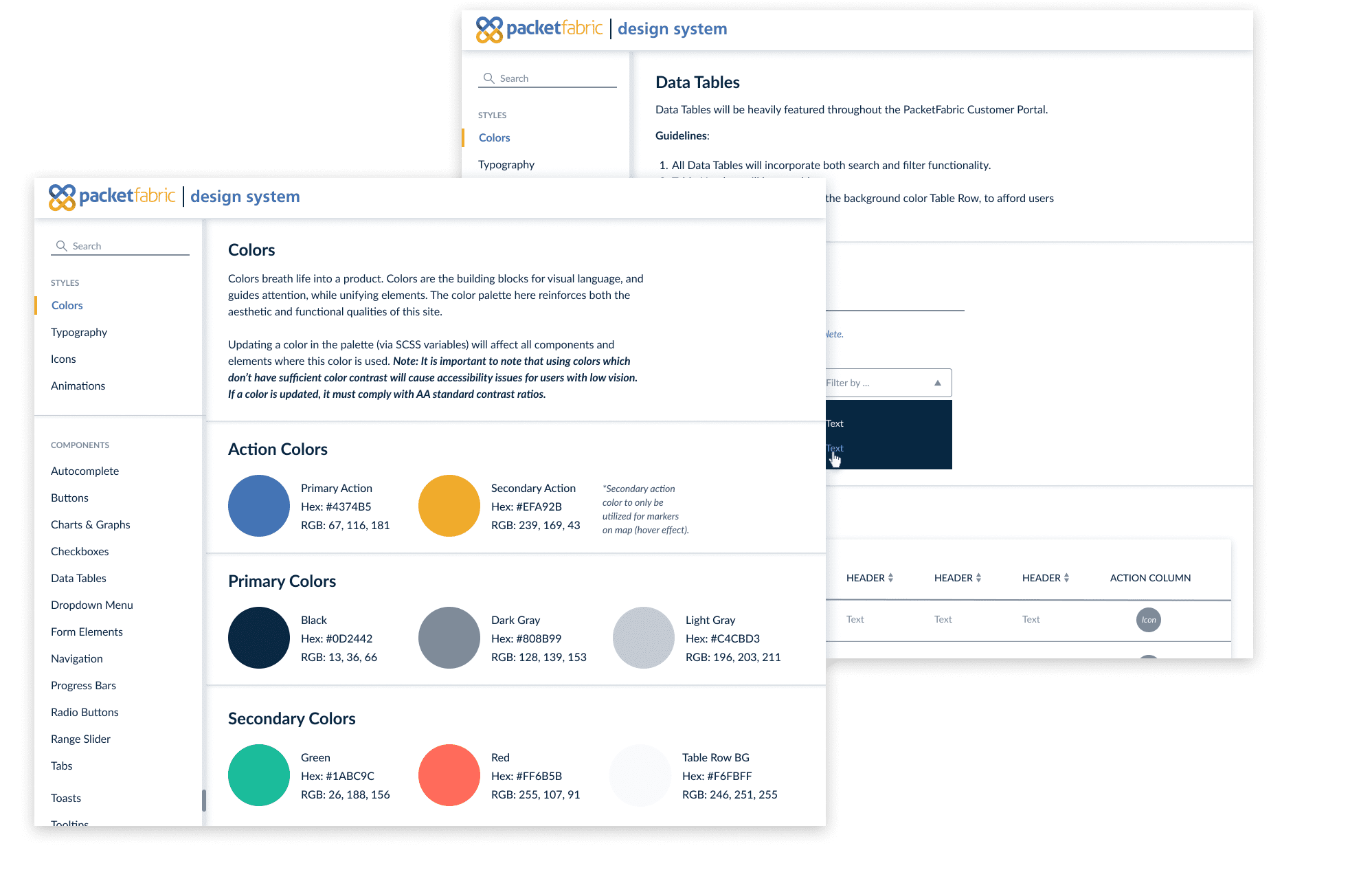
Usability testing
I built a mid-fidelity prototype and conducted internal testing with network engineers from potential future customers. The goals of testing were:
- Assessing discoverability and usability for tasks like "Creating a port" and "Managing port and virtual connection details."
- Understanding pain points and usability issues in the interaction flows.
- Gathering insights on user needs and preferences.
Final Designs
A few key screens from the final design.
Register company
A company must first be registered by an admin before users can be invited to sign up.
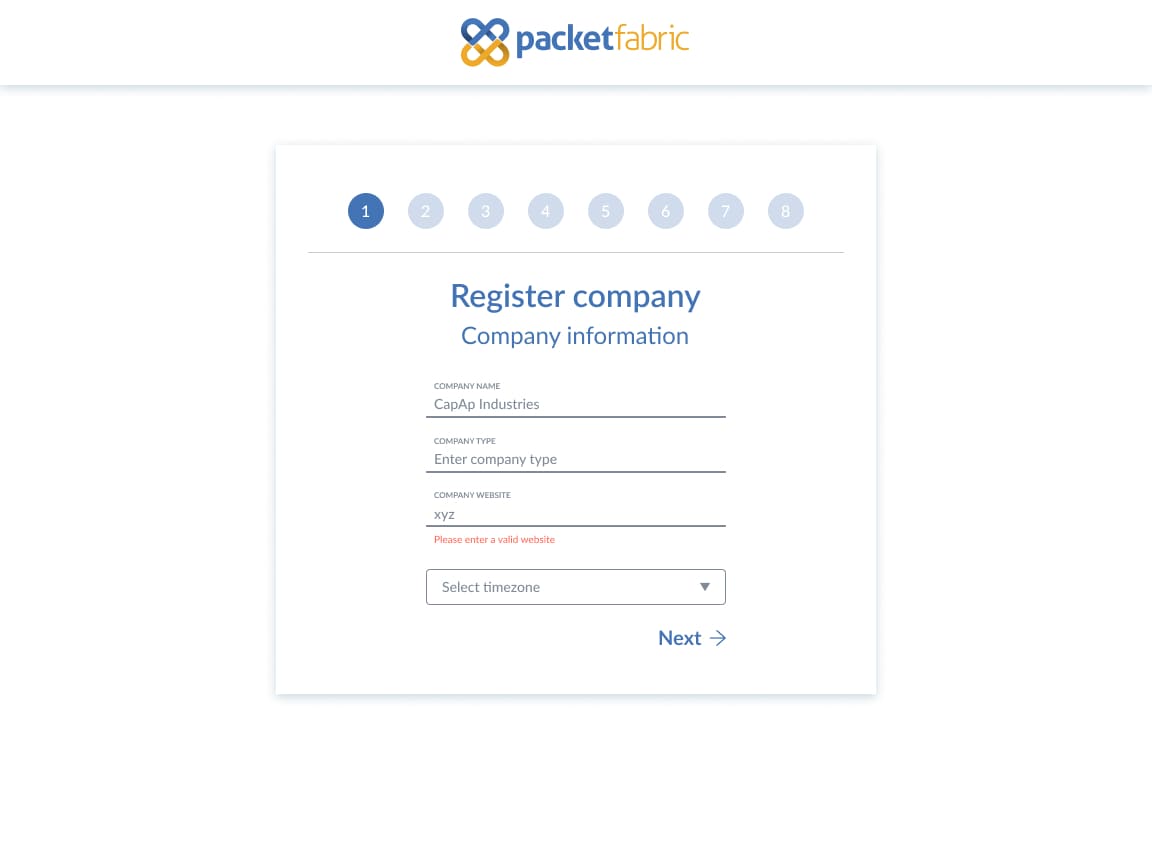
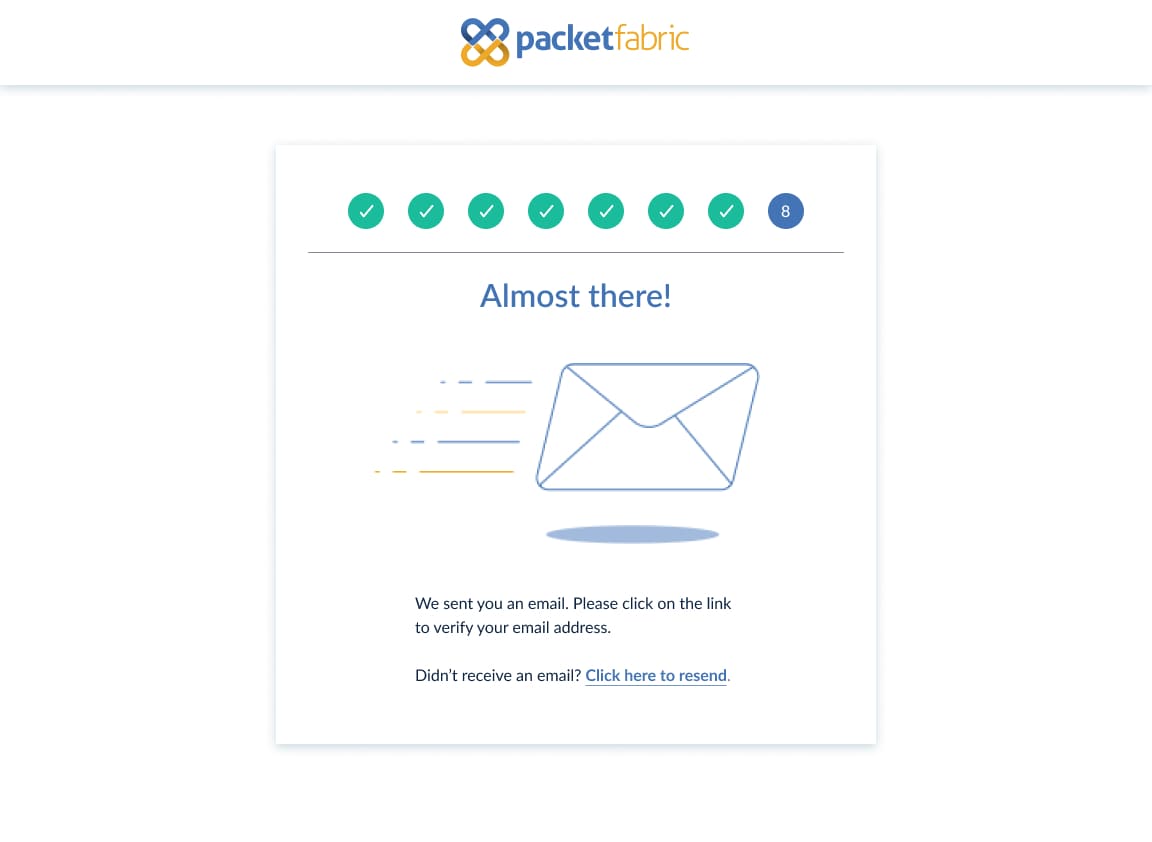
Create a port
The process for creating a port is a 3-step wizard, allowing users to select the market/site, interface speed, and confirm their choices.
